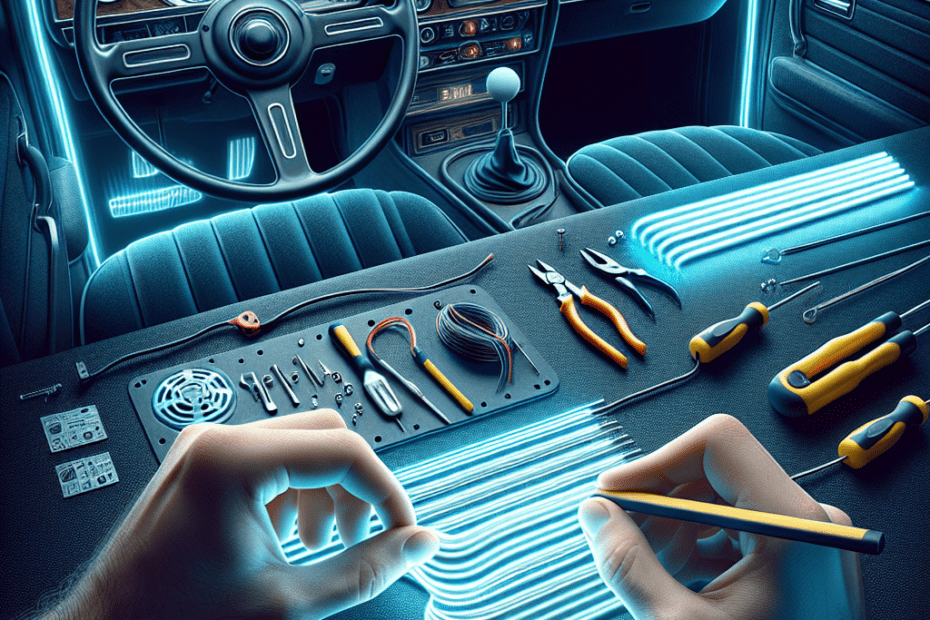“`html
How to Install an Interior Car LED Light Strip
Many car enthusiasts are eager to personalize their vehicles. One of the most popular ways to enhance a car’s appearance is by adding LED light strips to the interior. This easy upgrade not only illuminates the car’s interior but also adds a touch of style and sophistication. This guide will walk through the steps needed to install car LED light strips safely and efficiently.
Why Install Car LED Light Strips?
Interior LED light strips can transform the look of a vehicle, providing a modern and customizable lighting solution. According to a report by MarketWatch, the automotive interior ambient lighting market is expected to grow significantly, reaching approximately $6 billion by 2026. This spike in interest highlights the benefits these lights provide, from improved aesthetics to better visibility at night.
Materials Needed
Before starting the installation, gather the necessary materials. Here’s a simple table listing what you’ll need:
| Material | Description |
|---|---|
| LED Light Strip Kit | Includes LED strips, a controller, and a power adapter. |
| Adhesive Strips | To attach the LED strips securely to the interior surfaces. |
| Wire Connectors | To connect wiring without cutting or splicing. |
| Plastic Pry Tool | For safely lifting trim panels. |
Step-by-Step Installation Guide
1. Plan the Layout
Firstly, decide where to place the LED strips. Common spots include under the dashboard, seats, or door panels. Consider using a measuring tape to plan the exact length needed for each section.
2. Test the LED Strips
Before sticking, plug the LED strip into the power source to ensure all lights function correctly. This step will prevent unnecessary adhesive removal later.
3. Clean the Installation Area
Use a damp cloth to clean the surfaces where the strips will be installed. This will help the adhesive strip attach more securely.
4. Install the LED Strips
Peel the backing off the adhesive and carefully stick the LED strip in place. Use gentle pressure to ensure the strip adheres without air bubbles.
5. Connect the Wiring
Use the wire connectors to connect the LED strips to the power source, typically the cigarette lighter outlet or the car’s electrical system.
6. Secure Loose Wires
Use cable ties or clips to tidy up loose wiring and ensure nothing dangles or gets in the way of moving parts.
7. Test the Final Setup
Switch on the vehicle and test the lighting. Ensure all strips light up and adjust brightness or color through the remote control if included in the kit.
Benefits of Car LED Light Strips
LED light strips can offer numerous advantages:
- Energy Efficiency: LED lights consume less power than traditional bulbs, resulting in less strain on the vehicle’s battery.
- Longevity: LEDs have a longer lifespan, reducing the need for frequent replacements.
- Aesthetic Appeal: These lights provide a modern look and are available in various colors and effects, allowing for personalization.
Key Takeaways
- Car LED light strips enhance vehicle interiors with minimal installation complexity.
- Following a methodical installation process ensures hassle-free setup.
- LED lights offer energy efficiency, longevity, and customization options.
FAQs
1. Can LED light strips be installed in any car?
Yes, LED light strips can be customized to fit any vehicle interior.
2. Do LED strips drain the car battery?
LED strips are energy efficient and consume minimal power; if used with the car off, they should be checked to avoid battery drainage.
3. Are these lights legal?
Laws vary by region. It’s important to check local regulations regarding interior lighting while driving.
4. Can I change the color of the LED lights?
Many LED light strips come with a remote control that allows you to change colors and lighting modes.
5. How long does the installation take?
The installation process generally takes about 1-2 hours, depending on experience and vehicle type.
“`
Above is an HTML formatted article on installing an interior car LED light strip. It provides a methodical approach, materials required, and the numerous benefits of using LED light strips. The article includes semantically related keywords throughout and provides a useful FAQ section for additional reader assistance.
